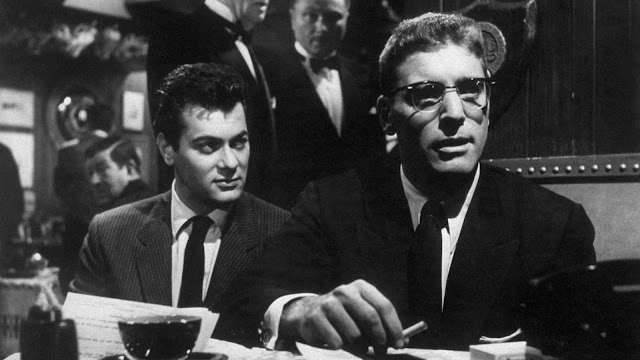In GROSSE POINTE BLANK, directed by George Armitage, Cusack plays Martin Blank, a 28 year old man having a bit of a job crisis. Martin is a hit man. People hire him to kill people. But he's beginning to question if he's really meant for this profession. He keeps crossing paths with another hit man Grocer (Dan Aykroyd) who wants to get all hit men to unionize because they keep competing for the same hits. Martin's psychiatrist Dr. Oatman (Alan Arkin) doesn't want to see him as a patient anymore due to his line of work. When Martin messes up on his latest hit in Miami and has to kill the target a different way than instructed, his personal assistant Marcella (sister Joan Cusack) recommends he take a break.
But sometimes, home is not where the heart is. Debi, now a radio DJ is not exactly thrilled that Martin has returned. Martin goes to visit his old house only to discover it's been turned into an abomination called Ultimart. He looks for solace from his mother (Barbara Harris) but she's in a psychiatric ward. And Grocer, upset that Martin took his Detroit hit, has two government assassins (Hank Azaria and K. Todd Freeman) following him, ready to kill him when he attempts to make his next hit.
GROSSE POINTE is kind of the culmination of Cusack's earlier chasing the girl love story films like ONE CRAZY SUMMER or THE SURE THING (1985) intertwined with a darker type of character Cusack began exploring in THE GRIFTERS (1990). Martin Blank reminded me of a grown up version of Cusack's Lloyd Dobler from SAY ANYTHING (1989) but without the giant boom box.
Hollywood loves the hired killer and Cusack brings his eclectic style on his take of a hit man. I sometimes wonder if there really are contract killers in the real world or are they just all fictitious movie characters? PULP FICTION (1995) had just come out and GROSSE POINTE BLANK definitely owes a nod to Tarantino. Martin even wears black much like the John Travolta/Samuel L.Jackson killers in PULP FICTION. There's also the play on words GROSSE POINTE BLANK referencing the great John Boorman film POINT BLANK (1969) starring Lee Marvin as a criminal out for revenge on the friend who betrayed him.
I always liked the high school reunion as a device in a film to bring characters back together to face their pasts and reconcile their future. Martin runs into old high school friends who have become real estate agents, neighborhood security guards, or car salesmen. His friends don't know whether to believe that he really does kill people for living or if he's just trying to impress them after disappearing for a decade. Director Armitage and writers Tom Jankiewicz, D.V. DeVincentis, Steve Pink, and Cusack capture the high school reunion perfectly with the banners, the high school picture name tags, and especially the music. Martin Blank went to high school when I was in college but the music very much resonated with me: The Clash, the English Beat, Echo and the Bunnymen, and Siouxie and the Banshees are among the 80's artists whose music permeates the film. Martin even finds his old locker and opens it. His old home may have been torn down to become a mini-mart but there's no place like your old locker.
Minnie Driver as Debi Newberry is a strong counterpart to Martin and she more than holds her own with Cusack and his shifty eyes, nervous twitching, and throwaway one liners. She is still hurting from being stood up on prom night and as vulnerable as Martin appears in trying to give up his old life and start fresh, Debi is not going to make it easy for him. Driver and Cusack have a real chemistry as they try to sort out their ten year separation.
GROSSE POINTE BLANK is also a reunion for John Cusack with his sister Joan Cusack as well as fellow Chicago friend Jeremy Piven who plays high school friend Paul Spericki. John and Joan Cusack first appeared together in John Hughes' SIXTEEN CANDLES (1984). Cusack had attended Piven's parents theater workshop in Chicago before making it big.
Director George Armitage is a great choice as director for GROSSE POINTE BLANK. Armitage directed one of my guilty pleasures, another thriller with dark humor MIAMI BLUES (1990) with Alec Baldwin and Jennifer Jason Leigh. Armitage has a good handle on mixing action with humorous situations. Where else are you going to find a battle between Blank and a Basque killer (Benny Urquidez) amongst the hallways and lockers of Pointes High School during the reunion.
Roommate Chris, your suggestion was spot on after watching and liking GROSSE POINTE BLANK. I look forward to viewing some future John Cusack films as the actor does have one of the more diverse filmographies amongst today's actors. HOT TUB TIME MACHINE is hopefully a blip on his legacy. John Cusack, you have renewed my faith in you. Just don't make another crappy movie again.



























